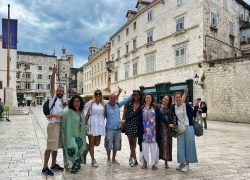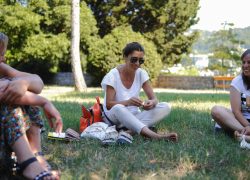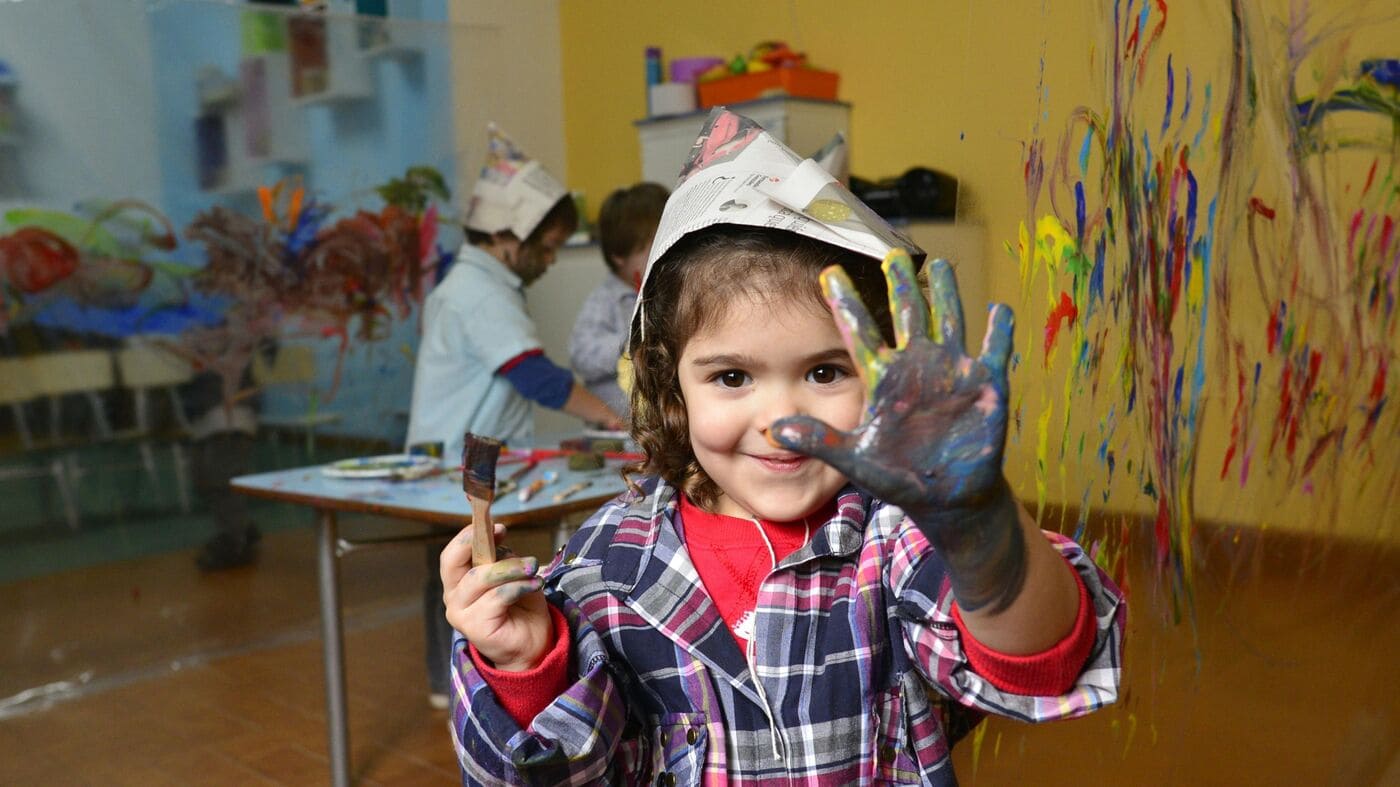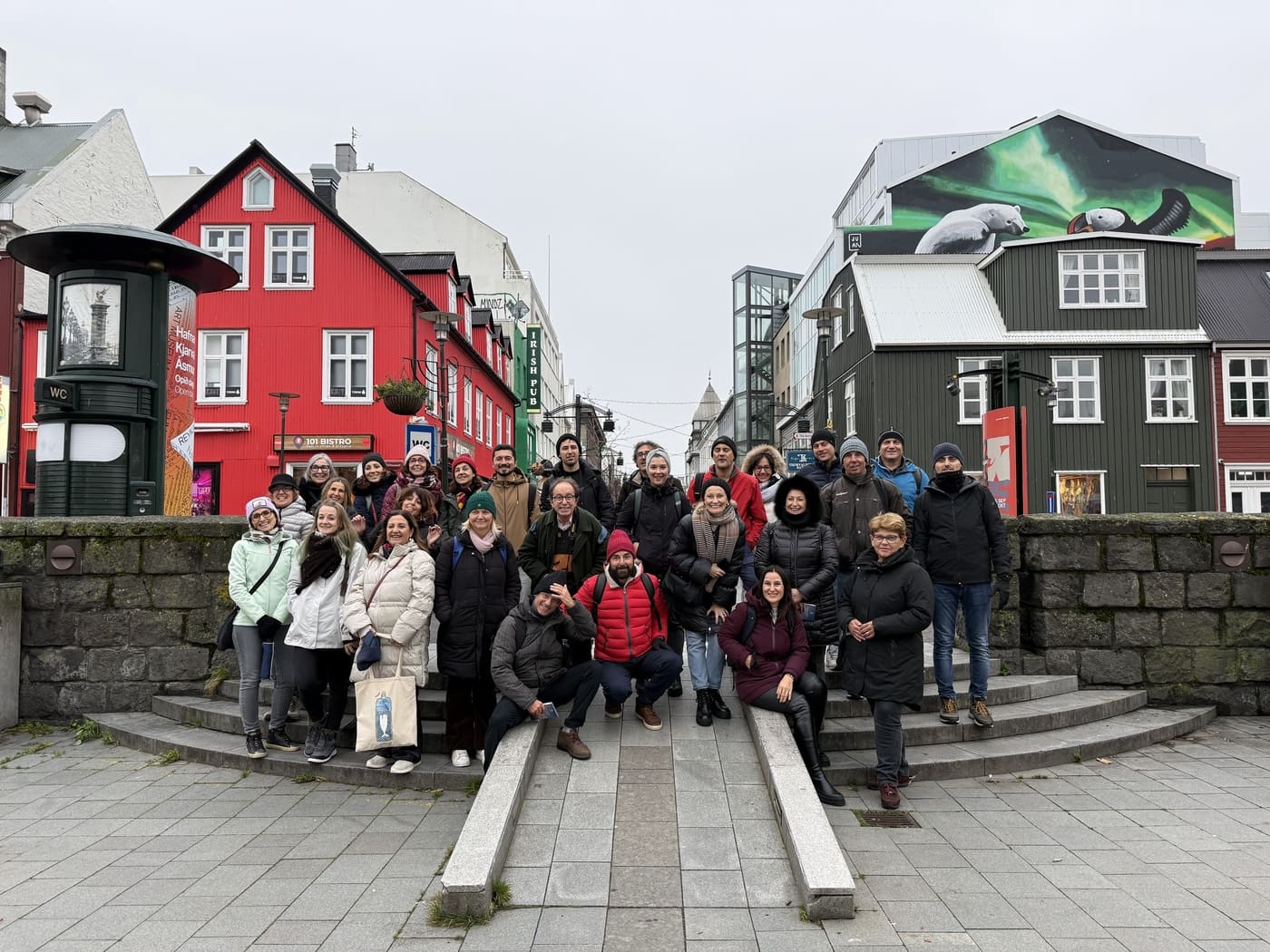Inside Iceland’s Education System: Trust, Nature, Clarity

School in Iceland: Where My Learning Wore a Wool Sweater (and Sometimes a Swimsuit)
Icelanders don’t “meet for coffee”. They meet each other in the swimming pool, chatting in steamy hot pots while the weather does whatever it wants. Also: Icelanders are epic nature lovers, they go outside in any weather, and there are twice as many sheep as people.
I had the privilege of being taken to the school by my dear colleague and friend Edda. What I witnessed there, and throughout my whole week in Iceland, was fascinating: calm, capable schools with a quirky soul, built on trust, play, equity, and a fierce love of the outdoors. If you teach anywhere in Europe and you’re curious how a tiny island with no army (and police who don’t carry guns) educates its young people, pull on your metaphorical wool socks. Off we go.
The Big Picture (Ages & Stages)
Their preschool education Leikskóli (preschool, 1–6) means play, curiosity, and building meaningful relationships. Teachers use open-ended materials, songs, stories, art, and daily routines that feel safe and predictable. Nature isn’t a “subject”, it’s a classroom. Kids go out in wind, sun, snow, and that special Icelandic “mist” (locals wear no umbrella; tourists: learn the hard way).
Grunnskóli (primary & lower secondary, 6–16) is compulsory. The school adapts to the child, not the other way round. Cross-curricular projects, creativity, well-being, democratic participation, inclusion, and sustainability are the spine. Assessment is growth-oriented with a simple scale: A (very good/excellent), B (good/meets expectations), C (basic/needs support).
Framhaldsskóli (upper secondary, 16–19) is non-compulsory, but 95% attend.
Students get to choose between vocational (with workplace training) or general academic. They finish with VET exams or the Stúdentspróf (matriculation) that opens doors to work or university.
Háskóli (university, 19+) is open for those with the Stúdentspróf. It is Bologna-aligned: 3–4 years BA/BSc, 1.5–2 years MA/MSc, 3–5 years PhD. Research, critical thinking, innovation, plenty of programs in English, and flexible part-time/online routes.
Icelanders are advocates of Símenntun (Lifelong Learning). Reskilling, upskilling, personal growth, flexible formats (evenings, part-time, online) and are designed for real lives.
Fun reality check: Preschool isn’t compulsory, yet 97% of children attend. When your national curriculum basically says “curiosity + outdoors + kindness,” one just doesn’t want to leave their child at home.
What They Actually Learn (and How)
Preschool (Leikskóli)
Pedagogy of play: Children learn through social interaction and exploration.
Open-ended materials: Loose parts, blocks, and nature finds (no, don’t pocket the pretty stones, more on elves later).
Whole-child skills: Language, empathy, problem-solving, music, art, storytelling.
Weather as a teacher: Resilience grows outside, in every season.
Primary & Lower Secondary (Grunnskóli)
Teaching around big, real-world ideas instead of separate, isolated subjects: Democracy, equality, creativity, well-being, inclusion, sustainability.
Student voice: Participation and agency are woven into daily routines and assessment, not sprinkled on top at the end.
PBL & cross-curricular work: Real-world projects connect subjects and communities.
Assessment for growth: A/B/C scale that emphasizes development, not ranking.
Upper Secondary (Framhaldsskóli)
Two strong pathways:
- VET: School + workplace training (trades, healthcare, design, and more).
- General academic: Preps for university via the Stúdentspróf.
University (Háskóli)
- Bologna structure: Clear, portable qualifications.
- Research & innovation: Students are trained to ask better questions, not just give quicker answers.
- International flavor: English-taught programs and global links are common.
How It’s Paid For (Spoiler: Access Matters)
- Compulsory school (6–16): Free tuition and school meals and teaching materials.
- Governance:
- Preschools & compulsory schools → Municipalities
- Upper secondary → Ministry of Education and children
- Universities → State (Ministry of Culture, Innovation and Higher Education) but independently managed
- Private schools? A few, often with public funding, because equity isn’t a slogan here.
Teachers: Fewer Hours, More Training, High Trust
- Qualification: A Master’s degree (five years of university) for all teachers, including preschool.
- Ratios:
- Preschool: 4–6 children per staff member
- Primary/lower secondary: around 10 students per academic staff
- Professional reality: Fewer teaching hours, more time for development. Salaries above OECD average.
- Challenge & response: There has been a shortage of licensed teachers, tackled through a national action plan that has doubled graduating teacher numbers in recent years.
What Makes the System Feel Icelandic?
- Nature as a norm: Outdoor learning is not a trend it is a way of life.
- Well-being centrality: Pools as community hubs. A must-try experience.
- Simplicity with purpose: A/B/C assessment scale, clear pathways at 16, practical VET.
- Safety by design: No army, unarmed police so schools focus on education, not lockdown drills.
- Community & continuity: Lifelong learning is flexible and accessible.
- Culture of trust: Teachers are highly qualified and treated like professionals.
Quick FAQ (The Things Everyone Asked Me)
Do Icelanders really not use umbrellas?
Mostly no. It’s often mist, and the wind flips umbrellas anyway. That’s why you see so many yellow and red waterproof raincoats on Instagram.
Is it true people socialize in pools?
Yes. Geothermal pools are warm, affordable, and everywhere. Community happens in warm water.
Are there really more sheep than people?
Yep, about double. Knit happens.
Horses with holidays, seriously?
Icelandic horses get seasonal breaks from riding. They’re national treasures with excellent manes and good union representativess (probably).
Are the stones actually magical?
Iceland protects its landscapes with science, signage… and stories. Some say certain stones house elves, and if tourists pocket them, mischief follows. Whether you believe or not, you’ll believe the outcome: stones stay in Iceland.
Main takeaways: Safety, Stories, and Shared Water
No army, unarmed police, social life in swimming pools, umbrellas that stay in the shop, stones with elves, and horses that take time off. My week, with Edda as the best guide, reminded me that a school system mirrors what a nation values.
Iceland’s schools aren’t perfect (none are), but they’re coherent. High trust in teachers, serious investment in early years, flexible pathways for teens, and a quiet insistence that well-being and nature are part of being educated. You don’t need geysers to borrow these ideas, just the courage to simplify, the will to protect teacher time, and a good rain jacket.
Content
- School in Iceland: Where My Learning Wore a Wool Sweater (and Sometimes a Swimsuit)
- The Big Picture (Ages & Stages)
- What They Actually Learn (and How)
- How It’s Paid For (Spoiler: Access Matters)
- Teachers: Fewer Hours, More Training, High Trust
- What Makes the System Feel Icelandic?
- Quick FAQ (The Things Everyone Asked Me)
Tags
You may also like:

Erasmus+ 2026 Programme Guide: Key Changes, KA1 & KA2 Deadlines

How to write a successful Erasmus+ project proposal (KA121/KA122)

Erasmus+ Programme 2028 – 2034 proposal: What to expect

How to make ChatGPT work for you: 5 prompt-writing hacks for teachers

A teacher training course in Iceland: A week to remember in Reykjavik

Erasmus+ Teacher Training Mobility with Platform21- Top 5 Reasons Why Croatia Is a Hidden Gem

ChatGPT for Teachers and Students: A Friend or a Foe?

How to Apply for an Erasmus+ KA1 Grant



